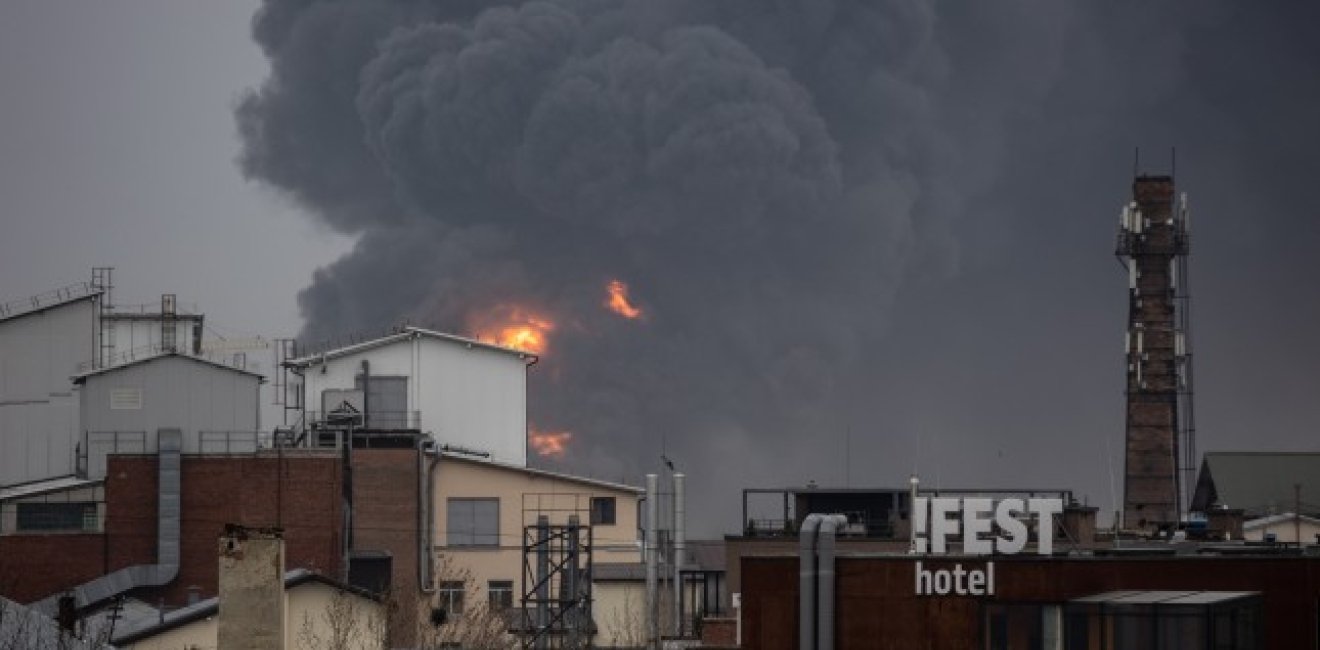This article originally appeared on New Security Beat.
Russia’s brutal aggression has wreaked devastation in Ukraine for more than a year. It has also forced a fundamental rethink of geopolitics. Central to that new thinking is the role of energy security and how to manage the insecurities created by the lopsided dependencies exposed by the conflict.
For decades, energy security was perceived as a matter of physical, temporal, and geographic realities. It was about not only where fossil fuel resources were located but also how oil and gas coursed through pipelines, or was shipped on tankers, across borders and into markets. Consumer countries saw insecure energy as synonymous with physical interruptions and extreme price fluctuations. Dealing with assertive, hostile, or unsavory suppliers and hardening supply lines with warships and boots on the ground was the way to better secure their energy supplies.
That formula is now changing. What will replace it? Six key vectors will define a new energy security, namely: critical minerals, data science, justice and equity, a shift in capital, resilience in supply chains, and cybersecurity. Such a new energy security moves beyond a focus solely on supply and encompasses demand, institutions, and markets. It also moves convincingly beyond the standard definitions of availability, accessibility, affordability, and acceptability of that supply.
The Ukraine war has highlighted both the central role fossil fuels still enjoy in keeping economies functioning and in world politics, as well as the insufficiencies of past paradigms, as epitomized by Europe’s woes in jettisoning its lopsided dependence on Russian natural gas.
Yet while past energy crises have caused a particular refocus on fossil fuel supply, the rapid policy responses so far in the present crisis have pointed to creating resilient and decarbonized energy systems and associated supply chains. But those high-level aspirations are too easily proposed but terribly difficult to implement, fund, and build.
Responses to Ukraine Accelerate the Energy Transition
Policy responses to Russia’s aggression, most notably in Europe, are focused on enhancing the energy system’s security. Yet they have also had the added benefit of accelerating decarbonization. This is empirical evidence for what has long been known: that security is often the most powerful driver of environmental benefits.
Clean energy and electrification are front and center in these efforts. As an example, the EU Commission’s REPowerEU plan both cements the phase-out of Russian energy imports and envisions a massive ramp-up of the green hydrogen economy. Germany is aiming for a fully renewable power sector by 2035. Similarly, the British Security of Supply Strategy focuses on home-grown energy sources to reduce dependence.
In this way, the EU and national-level strategies make important provisions for investment and institutional changes that will accelerate the clean transition, which, by some estimates, has already been brought forward by a decade. Billions in European public money are earmarked for building up transmission infrastructure, smartening systems, and steepening technology learning curves.
The transition from biomass to coal took 150 years. The war in Ukraine has ensured that the transition now under way will move much faster.
From Fossil Fuel Supply to Industrial Policies and Demand
Many transitions are occurring simultaneously. On the technology side, demand-side management and storage solutions are becoming increasingly prevalent. Yet these innovations alone cannot function without refining and augmenting the institutions and markets that support and foster them. And as we already see in military approaches to energy security, decentralized production will play an increasingly important role. Additionally, the wide adoption of cutting-edge data science and information technology will continue to grow apace.
Yet complicated questions about how best to manage or guide such transitions remain. Eager to maintain economic competitiveness, legacy industries have been handed billions in subsidies in 2022 to weather the price impact of the energy crisis, as have households—including billions just for covering margin calls. European gas consumption, for example, is down some 15 percent compared to pre-crisis levels—a change that is structural in nature. The Ukraine war has also given a great push to innovations in clean manufacturing and how to power and fuel major industries.
The new energy system now being created infers a distinct and important need for policy environments that are conducive to the creation of new markets, including different governance structures and flexible responses. The deployment of these energy carriers, the economic value they yield, and energy security itself now hinge on the extent to which capital effectively interacts with industrial ecosystems. This lends a competitive and security edge to countries that have the ability to implement balanced energy policies with some level of stability. By contrast, primary energy sources will slowly take a backseat in energy geopolitics.
The Low Carbon Shift: Who Gets the Edge?
Can we predict the winners and losers in the new geopolitics of energy? Success or failure hinges on at least three key factors.
The first factor is acquiring advanced technology know-how, underpinned by sustained public and private spending on R&D and associated workforce training. Next, these industries need the ability to take advantage of the extraordinary measures taken by governments (such as large subsidies) as they seek to shift from high to low carbon. Often, this will entail absorbing the significant additional resources made available by eager political leaders on a short-term basis. Finally, it will also require avoiding a populist political backlash by ensuring societal buy-in, or “social license to operate,” for the massive levels of new infrastructure required.
Different countries and regions will navigate this terrain in very different ways.
The EU has long-standing industrial policies in place to implement signature projects such as the EU hydrogen strategy. The bloc also leverages its “catalytic power” to form alliances for battery production and make the most of its newly minted Net Zero Industry Act. Coordinated market economies such as France and Germany also have strong traditions of balancing the interests of trade unions and employers, thus helping to keep inequality lower and maintain social peace during an inevitably bumpy transition process. These economies also thrive on incremental innovation, allowing them to focus on making the industrial base cleaner rather than replacing it in a move of creative destruction.
China has established itself as a leader in clean tech production, and it is home to world-leading clean tech production clusters that have evolved over decades and profit from long-standing process innovation. China also leads the world in clean energy investments and has retained its traditionally strong state role in the critical minerals that underpin these systems. Capacity expansion in renewable energy at scale is viewed as an important Chinese national security target as it helps to keep the need for energy imports at bay.
By contrast, the United States is home to radical innovations in areas such as individual mobility or the digital economy. Yet, as a liberal market economy, it is prepared to accept the loss of entire sectors along the way, as well as allowing a higher income distribution that feeds inequality and endangers public support. They are also less skilled at aligning private capital with the public domain to engender business development. The multi-billion-dollar Inflation Reduction Act signed into law in 2022 will clearly boost private U.S. investment into greener modes of mobility, power generation, and industrial production. Yet, making the most of public cash injections into clean technology may require the U.S. to revisit its stance on state-industry relations. It also remains the world’s largest producer of oil and gas, and navigating that razor’s edge continues to prove difficult.
The losers? Russia will find its export market opportunities limited thanks to a tightening Western energy sanctions regime, as well as a general softening in the market. In the longer term, competing producer states such as Saudi Arabia will likely claim an increasing share of a shrinking fossil fuel market, before it eventually gives way to either new business models or ceases to play a significant role in the global energy economy.
A New Vision for Energy Security
The geopolitical premium in energy security lies both in resilience and obtaining an economic edge in global competition.
In the emerging new concept of energy security, the past focus on physical resource assets is shifting to an emphasis on the ability of governments and companies to deploy capital to enable decarbonized energy and support resilience. Energy security is found primarily in a highly nimble provision of energy services, centered on technology-based fixed assets and the organizations that govern and support them. This new vision shifts the focus from primary energy supply to clean innovation, demand-side measures, and finance.
The more that a nation’s energy system shifts from raw physical resources to systems that rely on capital and technology, the easier it will be to get out from under the thumb of unsavory suppliers and gunship security. But it is too superficial to simply call this ongoing set of energy transitions “messy” or “difficult.” Such a viewpoint ignores the very tools already available to us—solutions that rely on already developed and sophisticated ways of analyzing energy security and implementing well-understood methods.
The irony of this growing transition is that it is not climate change that is pushing Europe and others into accelerating the race to zero carbon. Rather, it is Russia’s war that is providing a very powerful motivator to nations that seek greater energy security.
Authors

Director of the Payne Institute and Professor at the Colorado School of Mines


Environmental Change and Security Program
The Environmental Change and Security Program (ECSP) explores the connections between environmental change, health, and population dynamics and their links to conflict, human insecurity, and foreign policy. Read more


Global Europe Program
The Global Europe Program is focused on Europe’s capabilities, and how it engages on critical global issues. We investigate European approaches to critical global issues. We examine Europe’s relations with Russia and Eurasia, China and the Indo-Pacific, the Middle East and Africa. Our initiatives include “Ukraine in Europe”—an examination of what it will take to make Ukraine’s European future a reality. But we also examine the role of NATO, the European Union and the OSCE, Europe’s energy security, transatlantic trade disputes, and challenges to democracy. The Global Europe Program’s staff, scholars-in-residence, and Global Fellows participate in seminars, policy study groups, and international conferences to provide analytical recommendations to policy makers and the media. Read more





